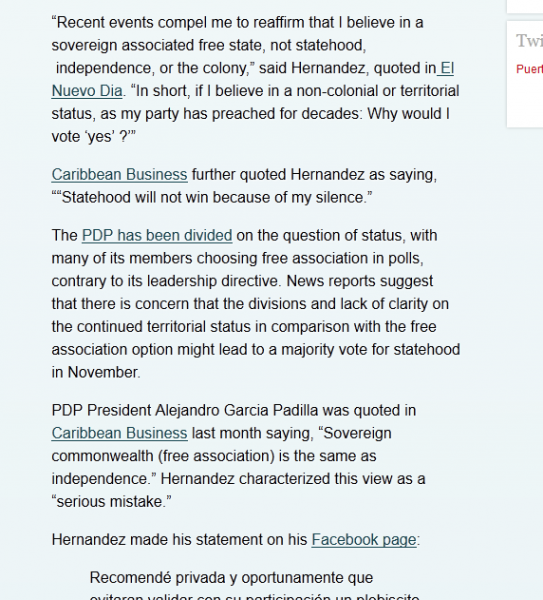Your cart is currently empty!

Anchor Text for Outgoing Links
From the point of view of SEO, we have good reason to be concerned about the anchor text for our incoming links, but from the point of view of usability, we should think carefully about the anchor text for outgoing links.
What’s anchor text?
Anchor text is the word or words a person clicks on to go to another page. In the example here, we see that “Caribbean Business” is the anchor text for the first link. It’s underlined and it’s a different color from the main text, so we know it’s a link.
This is why it’s very important, by the way, not to go around wantonly underlining and coloring your text. You make people think you have links when you don’t, and they click on them with no result, becoming frustrated and angry. Not what you want at your business website.
The link with the anchor text “Caribbean Business” goes to Caribbean Business, and it goes to the specific article we’re quoting. This way, readers can read the rest of the article or the context of the quote easily.
The example thus satisfies the essential rules of anchor text:
- Visitors should know they’re clicking a link.
- Visitors should know where the link will take them.
Sometimes it’s more complicated
Our next example is a bit different. Our anchor text is “PDP has been divided.” This phrase links to an earlier article at our website which reports that the PDP has been divided on the question of status, with evidence for the claim.

This is a case in which we have a long sentence. We want to give our readers the opportunity to find evidence for our claim, so we’re using a link much as we might use a footnote in an academic paper. We don’t want to link to the whole sentence, because that would be ugly and unwieldy. This link is about as long as we would ever want a link to get.
This phrase has been chosen because it is the best statement within the sentence of the main point of the article it links to. If we didn’t have a good phrase to use for this purpose, our best move would be to rewrite the sentence to provide one.
Sometimes we can’t create such nice sentences, and our best bet is just to announce that we have more information somewhere else. In the early days of the internet, people did this with sentences such as “Click here to read more about…” but we now know that “here” is never good anchor text. People skim for links sometimes, especially in a situation like the example site, where visitors are likely to be doing research.
A better alternative is to use some variation on “Read more about…” where the anchor text tells as clearly as possible where a visitor will end up if they click. In the examples below, the anchor text isn’t completely clear, but a visitor can at least figure out where they’re being taken.

Another option, especially if there are multiple documents to consider, is a bulleted list of resources:

In this example, the topic is clear from the preceding post, and the links make it clear what medium each link offers: a telecast, a web page, and a press release.
The bottom line
Keep anchor text as short as possible and as clear as possible.
More posts on the question of outbound links:
by
Tags:
Comments
2 responses to “Anchor Text for Outgoing Links”
-
Hi! Would you mind if I share your blog with my facebook group?
There’s a lot of people that I think would really appreciate your content.
Please let me know. Thank you-
Of course, you’re welcome to share.
-

Leave a Reply